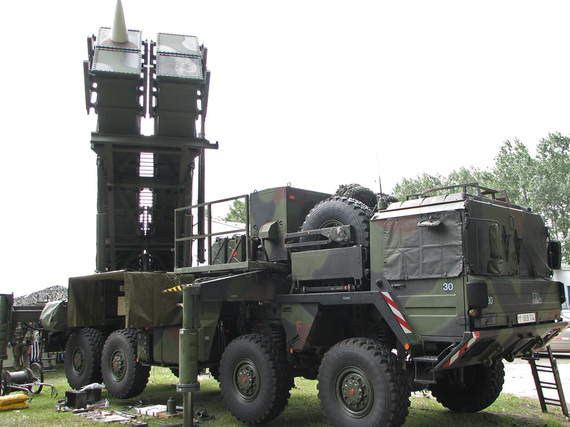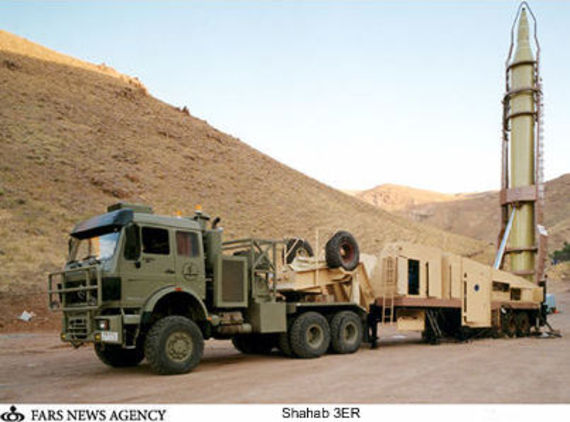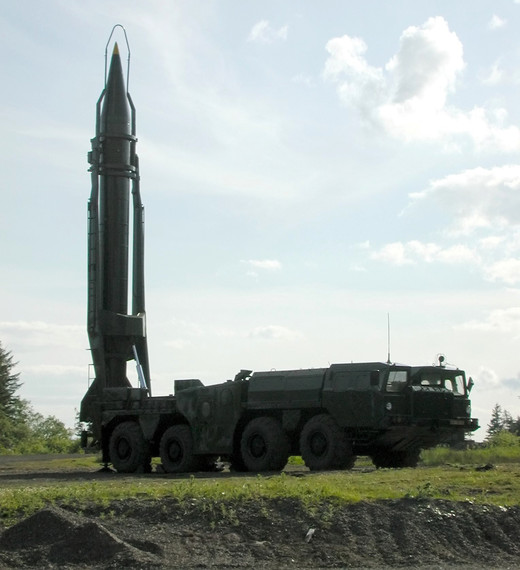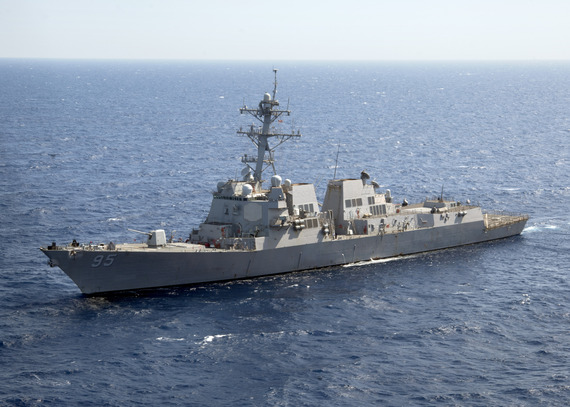The final dismantling of the economic sanctions against Iran by the United States and the European Union would not be completed until October 2016. By then, the consensus of intelligence agencies worldwide was that the emergence of a nuclear armed Iran was a forgone conclusion. The only questions left unanswered were: how soon would it happen, would the Tehran government attempt to secretly circumvent the terms of the Joint Comprehensive Plan of Action otherwise known as the P5+1 agreement and what, if anything, either covertly or publically, would the United States and its European allies do in the event the Iranian violations were discovered?
In secret Congressional testimony in March of 2017, Carly Fiorina, the new director of National Intelligence, confirmed that the CIA had concluded that there was a 95% chance that Iran would have useable nuclear weapons by 2025 and that there was a 75% chance they would have such weapons by 2020. Britain's Secret Intelligence Service, commonly known as MI 6 (Military Intelligence, Section 6) was slightly more optimistic, it had predicted a 90% probability that Iran would possess useable nuclear weapons by 2025 and only a 50% chance they would have such weapons by 2020.
The events leading up to the actual disclosure of Iran's nuclear weapons arsenal began quietly enough. On June 15, 2020 at 11:30 AM, local time, (18:30 Zulu) a threat analyst at the Joint Air Defense Command at the Cheyenne Mountain Complex, popularly known as Crystal Palace, monitoring the feed from an infrared satellite over the Eastern Mediterranean logged what appeared to be a heat plume about 350 miles southwest of the Indian port of Mumbai just on the edge of the satellite's coverage track.
Following established protocols he logged the incident and attempted to track a trajectory. He also immediately advised a U.S. Air Force AWACS over the Persian Gulf of what appeared to be a missile launch. The AWACS radar operator confirmed the existence of a heat plume in the eastern Arabian Sea, but was out of range to determine a trajectory. The missile, which appeared to be moving on a south-southeast track, quickly passed out of the satellite's range and the operator, with only 10 seconds worth of telemetry, was unable to determine the precise trajectory of what appeared to be a relatively slow moving missile. The incident was written up, technically it was a UFO, unidentified flying object, most likely a missile test being carried out by the Indian Navy.
The incident might have been forgotten, one of dozens of such unexplained events that are monitored each year by the Air Defense Command. Two weeks later, the Pentagon's Office for Naval Liaison, the first contact point between the Pentagon and the foreign Naval Attaches accredited to the United States, received a meeting request from the Indian Naval Attaché. The meeting was brief. Why had the United States conducted a missile test within 500 miles of the Indian coast the Indian attaché demanded? Long standing, though unofficial, agreements between the U.S. Navy and the Indian government required the U.S. to advise India of any test missile launches in its proximity and that no launches should take place within 500 miles of its coast.
The Director of Naval Liaison, a two star admiral, replied that he was unaware of any navy tests in that area but promised to investigate. Three days later he confirmed to the Indian Naval Attaché that no U.S. government agency had conducted any missile tests in that vicinity and that analysts at the Joint Air Defense Command had assumed it was an Indian Navy test. He also asked for a copy of any telemetry that had been captured by the Indians on the missile's trajectory.
The Indian telemetry data arrived a few days later and was passed on to the Office of Naval Intelligence and to the Director of National Intelligence. The data raised more questions than it answered. Although it clearly confirmed that a missile launch had taken place, the heat signature was too small and the speed was to slow to be an ICBM and the speed was too fast to be a cruise missile. Moreover, the lack of any adjustment in the trajectory also suggested it was not a cruise missile.
Indeed, the relatively low burn time, a little more than a minute, suggested a relatively short range, roughly 400 nautical miles, and was more reminiscent of first generation missile technology like the World War II era V-2 missiles. There are only about a half dozen countries that have mastered the technology to launch missiles from a submarine and all of them had far better missiles than the one identified in the Indian telemetry. Moreover, the missile portrayed in the data would be too inaccurate to use in naval surface warfare and was clearly inferior to the cruise missiles already possessed by the world's major navies.
It fell to a junior analyst at the CIA, whose subject matter specialty was Iranian maritime affairs, to finally solve the puzzle. The telemetry data was roughly consistent with a Soviet era R-17 surface-to-surface missile, otherwise known as the Scud B or its longer range version the Scud C. Variants of the Scud B/C had been developed by North Korea as the Hwasong-6 and Iran as the Shahab 2 and Shahab 3. The Soviet Union had produced over 7,000 Scud B missiles and widely exported them. They were commonly available on the black market for around $100,000 each.
The CIA was adamant that there was no evidence that either Iran or North Korea had developed the technology for submarine launched ballistic missiles. Moreover, it was difficult, although not impossible, to launch a Scud B type missile from a submerged submarine. A subsequent analysis of maritime traffic data from the Advanced Identification System (AIS) ship monitoring data base confirmed that the Iranian oil tanker Darius I on a course from the Iranian oil terminal at Kharg island to Mumbai India was in the vicinity of the coordinates identified with the missile launch and had likely been the platform used to stage it.
Launching a Scud type missile from an oil tanker might seem rash, but the tankers large size and displacement afforded a more stable launch platform than that of a smaller cargo ship. The Office of National Intelligence subsequently confirmed that both North Korea and Iran had been conducting such tests since at least 2004.
On February 1, 2021, on the 42nd anniversary of the Iranian revolution, Western intelligence agencies confirmed the detonation of a nuclear warhead in Iran's desolate Dasht-e Kavir (Great Salt Desert) missile testing range in the center of the Iranian plateau. This device had a relatively low yield, ten kilotons, roughly half of the explosive force of the atomic bomb dropped on Hiroshima in 1945. The initial intelligent assessments had concluded that the nuclear test had been a failure and that the relatively low yield meant that the detonation had been incomplete.
Low yield atomic weapons were nothing new. During the Cold War both the United States and subsequently the Soviet Union had developed so called Theater Nuclear Weapons, primarily in the form of less than 10 kiloton yield atomic artillery shells for use on the battlefield, especially against concentrations of Soviet armor in the event of a Soviet invasion of Western Europe. The technology of miniaturizing a warhead to this size, however, was among the most closely guarded secrets of nuclear weapons technology--hence the surprise among intelligence agencies when subsequent intelligence from within the Iranian government confirmed that Tehran had considered the test successful.
Suddenly alarm bells began to go off in Washington. The combination of even a relatively low yield warhead combined with a ship launched Scud B type missile represented a new and unprecedented threat to American security. Given the ubiquity of the Scud B missile and the low cost with which they or their variants could be purchased or manufactured, Iran could suddenly pose a credible nuclear threat to the continental United States using its nuclear armed, ship launched Shahab 2 missiles. The combination of a ship launched Scud B type missile with a small, low yield warhead combined with the proximity of its launch was effectively a poor man's ICBM. Moreover, given the large number of Scud Bs in circulation, it would be possible to hide the origins of the missile although in time the isotopic signature of the nuclear explosion could be traced back to a country of origin.
Roughly 75% of the population of the United States and some 80% of the Pentagon's military facilities are within 200 miles of the American coasts. Given the range of the Scud B and its variants, a ship could approach within 300 miles of the United States, still a comfortable 100 miles outside of U.S. territorial waters, and bring a significant percentage of the U.S.'s population and its military facilities into its strike zone. At a speed of roughly 4,000 miles an hour, the maximum flight time at the extreme end of its range would be about seven minutes.
 15 kiloton nuclear explosion from an 11 inch nuclear artillery shell, Upshot Knothole GRABLE Test, Nevada Testing Range, 1953
15 kiloton nuclear explosion from an 11 inch nuclear artillery shell, Upshot Knothole GRABLE Test, Nevada Testing Range, 1953
Equally dangerous, the Shahab 2 can reach an altitude of 120 miles. A series of Shahab 2s launched from both coasts armed with an electromagnetic pulse weapon could fry most of the electronic systems in the United States, leaving the country vulnerable to further attacks. Moreover, it was unclear whether existing anti-ballistic missile defenses would prove effective against the smaller Scud B type missiles, especially if they were launched in a swarm against multiple targets.
There were approximately 130,000 commercial ships of 10,000 or more deadweight tons registered with 195 different countries around the world in 2020. In a typical year, there were approximately 70,000 port calls in the United States. Even eliminating smaller vessels, U.S. registered ships and coastal trade ships, still left tens of thousands of ships that would need to be tracked. In addition, foreign ships heading for Caribbean, Mexican, and Canadian ports often sailed within 200 miles of the U.S. coast. All of those ships were potential threats even if they did not ultimately enter U.S. territorial waters. America's European allies were even more vulnerable to an attack.
On February 7, 2021, for the first time since the end of the Cold War, a U.S. president went on national television to reaffirm that any nuclear attack on the United States or any of its allies would be met by a massive retaliatory nuclear response both against the country launching the attack and against any other country deemed to have played a major role in facilitating that attack. President Marco Rubio, flanked by his Vice President, Ben Carson, went on to add that any foreign ships approaching within 400 miles of the U.S. coast, regardless of whether they were calling on U.S. ports or not, would be subject to inspection and would not be allowed to proceed unless a U.S. Federal marshal was onboard. President Rubio went on to add, "Let me be clear, any ships that resists inspection will immediately be sunk."
The president went on to add that not since the Cuban missile crisis in 1962 had the U.S. been so vulnerable to a nuclear attack with virtually no warning or so unprepared to stop it. The President went on to describe the catastrophic effects of a ten-kiloton nuclear exposition on a typical American city:
"From the epicenter of the blast to a distance of approximately one-third mile, every structure will be destroyed and no one would be left alive. A second circle of destruction extending three-quarters of a mile from ground zero would leave buildings irreparably damaged. A third circle reaching out one mile would be ravaged by fires and radiation."
He added,
"depending on the city and the time of day, estimated casualties would run from between 50,000 and 300,000 people with a like amount dying subsequent to the attack from radiation sickness and injuries suffered during the attack."
Finally the President announced that he would immediately order the construction of a comprehensive theater nuclear defense system designed to protect the borders of the United States, both maritime and terrestrial, from the danger of a short range nuclear attack and that he would ask Congress to approve the 800 billion dollar price tag. He also announced that Aegis armed U.S. Navy ships would immediately be redeployed to act as a missile defense screen until a permanent ground based system could be constructed.
President Rubio also announced that he would ask Congress to fund the creation of a United States Maritime Marshall Service and begin the recruitment and training of up to 5,000 maritime marshals. Until the new marshal service was fully operational, estimated at 18 to 24 months, the U.S. would utilize a combination of U.S. Navy active and reserve officers as well as Coast Guard officers supported by local National Guard units.
A number of countries, most notably Iran and North Korea, immediately announced that inspection of any of their ships while they were in international waters was a violation of maritime law and would be considered an act of war by the United States. Asked to respond, the White House Press Secretary replied, "If that's what they want, that's what they'll get."
In Tehran, in the meantime, the government of Iran announced that they had already deployed more than five hundred Shahab 2 missiles, an undisclosed portion of which were nuclear armed, on a variety of vessels throughout the world's oceans. Iranian President Solemani pledged that the deployment was for deterrence purposes only and that it would only use the weapons in the event it was attacked.
He went on to add that his government planned to produce up to 1,000 Shahab 2 nuclear armed missiles over the next ten years at a cost of approximately 20 billion dollars. "We have the money, we have the will and we have the technology" he said, emphasizing again that Iran's nuclear program "was for defensive purposes only," and that neither Iran's neighbors or the world community had anything to fear from Iran's nuclear capabilities. Tehran also demanded that as a de facto nuclear superpower it should be granted a permanent seat and veto power on the U.N. Security Council.
In Washington, in the meantime, both the Senate and House announced that their respective Committees on Homeland Security would hold emergency hearings to investigate the imminent threat to American security. Senator Rand Paul, Chairman of the Senate Committee of Homeland Security, described this development as "the biggest intelligence failure since 9/11," "adding the potential threat and casualties were 50 to 100 times greater than the attack on 9/11." U.S. Patriot Missile battery
U.S. Patriot Missile battery
Intelligence agencies in the meantime rushed to develop new "contingency scenarios" for how Iran might use its new found nuclear capabilities. Speaking off the record because he had not been authorized to speak to the press, a senior analyst at the Defense Intelligence Agency remarked,
"we've believed for a long time that an Iranian nuclear weapon was inevitable, but we always assumed that it would be used to intimidate Tehran's neighbors or against American military assets in the Gulf. We just never imagined that it would be deployed directly against the continental United States or that it could be scaled up so quickly.This is pretty cheap technology," he added, "and to add insult to injury by lifting the sanctions and releasing over 100 billion dollars in frozen financial assets we effectively financed the biggest threat to American security since the Cuban missile crisis." "This is a whole new ball game," he added, "the world will never be the same."
Fact CheckU.S. intelligence agencies has repeatedly confirmed that both Iran and North Korea have been experimenting with ship launches of the Shahab2 and Hwasong 6, their more advanced versions of the Soviet era Scud-B missile since at least 2004.
75% of the U.S. population and 80% of the Pentagon's military facilities are actually within 200 miles of America's coasts.
The Soviet Union did in fact produce more than 7,000 Scud B missiles and exported the missile to more than 32 countries. It has also supplied four countries, including Iran and North Korea, with the technology to build their own versions. In total, including both the quantity produced and exported by the Soviet Union and local versions, there are probably around 10,000 Scud B type missiles and subsequent variants in the world today. This is relatively simple technology to obtain and the going price for a Scud B type missile in the world's arms market is in fact approximately $100,000. Delivery, often the trickiest part, is extra.
According to the Federation of American Scientists, as of 2006, Iran had stockpiled between 200 and 450 Shahab 2 or comparable missiles. The amount of the current stockpile is unknown, but it is believed to be significantly larger.
The technology for miniaturizing a low yield nuclear warhead so it could fit on a Scud B type missile is among the most closely guarded secrets of nuclear technology. There have been consistent, although at least publically, unconfirmed reports that North Korea has made significant progress in miniaturizing a nuclear warhead. It is also safe to conclude that any North Korean nuclear technology is available, at the right price, to Iran.
The Scud B is a notoriously unreliable missile. Its lack of a reliable guidance system makes it virtually useless as a battle field weapon. It is largely a terror weapon, as was amply demonstrated by Saddam Hussein's use of them against Israel during the First Gulf War. Armed with even a low yield nuclear war head makes it a potent weapon of terror regardless of how unreliable its guidance system would be.
As a result of the dismantling of economic sanctions, the government of Iran will obtain access to between 100 billion dollars and 150 billion dollars in previously frozen financial assets. The Obama administration has already released approximately ten billion dollars in financial assets to Tehran despite the fact that a majority of Americans, including a majority of their elected representatives were opposed to the P5+1 agreement.
National Security Presidential Directive 23 issued by President George Bush on December 16, 2002 called for the creation of an operational ballistic missile defense system for the United States by 2004. To date, however, little progress has been made in implementing such a system. In any case, that system was designed to intercept ICBMs and even if fully implemented would not offer a credible defense to a short range nuclear missile attack like the one described above.
Faced with the threat of short range, nuclear armed missiles the United States could probably cobble together a rudimentary defense relying on a combination of land based Patriot missiles and Aegis missile armed ships to at least offer some protection for the largest coastal cities. With a U.S. Navy now reduced to 300 ships, of which only 29 carry the Aegis Ballistic Missile Defense system, the U.S. would find it impossible to provide a broader perimeter defense.
In fact, the U.S. is unprepared to defend against large numbers of short range ballistic missiles launched from a distance of only a few hundred miles from the American coasts especially if those missiles were "swarmed" and included a mix of both nuclear armed and conventional warheads. Such an attack would likely overwhelm whatever defensive system the U.S. could organize on short notice.
The U.S. response to such a threat would probably force the withdrawal of a significant portion of the U.S. Navy's ships from their current deployments and their re-tasking to a defensive role off the coasts of the United States. Even absent an actual attack, the threat of one would significantly constrain the ability of the United States to project military power abroad.
The description of the effects of the detonation of a ten kiloton warhead are taken from the latest estimates published by the Department of Homeland Security.
The plot line is purely fictional, the technology described, its capabilities, and the consequences of its deployment are all very real.



